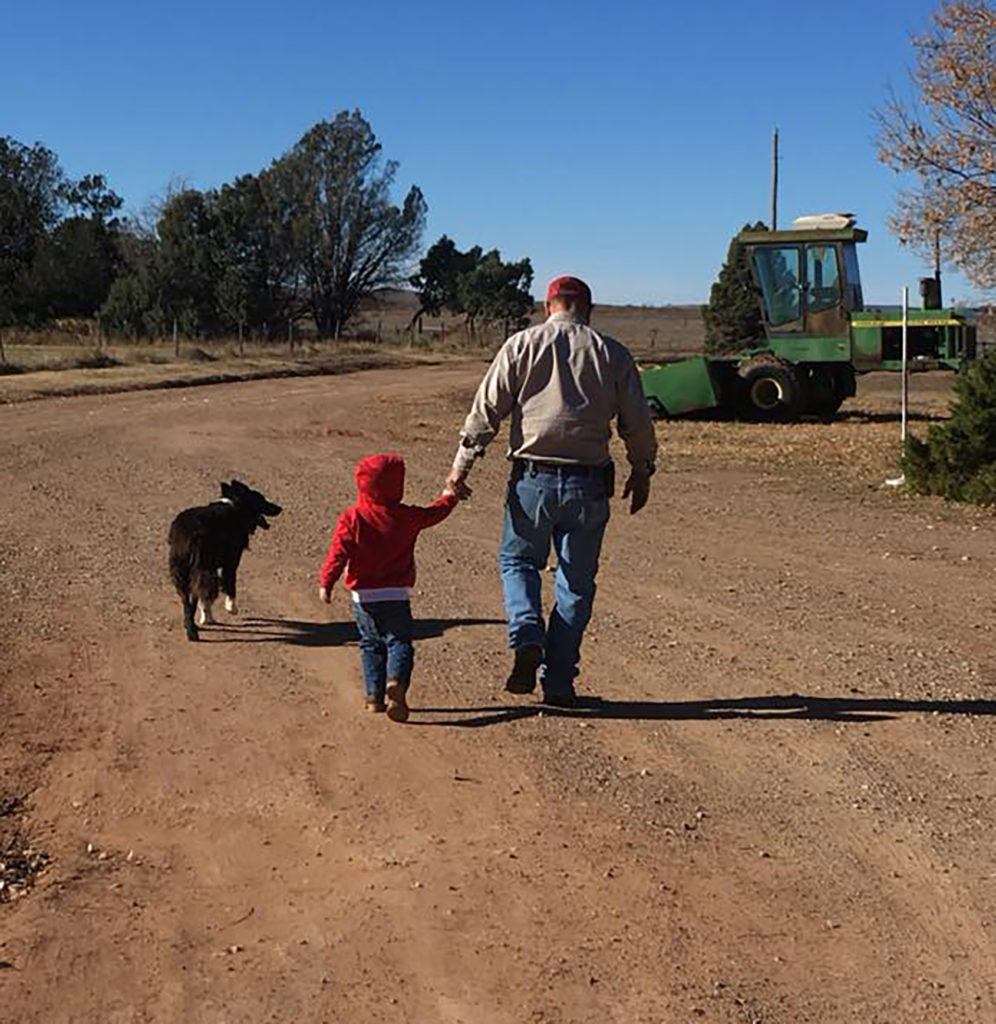Estate planning in five steps
AgriLife Extension agricultural law specialist offers a five step plan to estate planning

Estate planning can be overwhelming, but a Texas A&M AgriLife Extension Service specialist offers a guide to estate planning in five steps to help make the process manageable and ensure family legacies can be passed on as intended.
“Unless you have been through it, most people just don’t realize what kind of issues can come up and what all can go wrong if you don’t have a plan in place,” said Tiffany Dowell Lashmet, AgriLife Extension agricultural law specialist, Amarillo.
Lashmet told the crowd at the recent Southwest Beef Symposium in Amarillo the primary reason to get an estate plan is: “If you do it right, the next generation can keep on operating.”
While an attorney will be necessary through some of the process, she said, many things can be done in advance, at your own pace and for free. This estate planning in five steps is the best place to start.
Step 1: Create a Flight Plan for documents
Lashmet said it is important to start by establishing one location where all the documents someone might need are gathered if something should happen.
This folder of documents should include: estate planning documents, information on IRA/401(K), pension or retirement plans, life insurance policies, bank account numbers, safety deposit box information including who has access, credit card and debt information/payment schedules, health insurance policies, birth certificates, marriage licenses, major personal property and business asset lists, burial plot information, funeral instructions, email and computer passwords, deeds and titles, livestock and stored crops lists, government contracts and business relationships such as attorneys.
“Put this somewhere safe and tell someone about it,” she said. “Don’t lock it away and where nobody knows where it is or how to access it.”
Step 2: Communicate with interested persons

“It only leads to extra problems if you don’t communicate with your family and potential heirs to determine what their interest in the agricultural operation may be,” Lashmet said. “I recommend you have a sit-down discussion. This allows you to gauge their interest and determine who wants what, what level of involvement they might be interested in, and what their goals and values are.”
Include all stakeholders in this conversation, she advised, including spouse, children, parents, siblings, anyone who might have an interest.
Another key consideration is to determine the main goals for the particular person, family and business.
“Perhaps the goal is to keep the ranch in the family, or perhaps the goal is to minimize capital gains taxes when the land will be sold or to ensure qualification for Medicaid,” Lashmet said. “Understanding the goal is key because that will instruct the best plan for the individual.”
There is no plan that fits everyone because everyone’s goals are going to be different, Lashmet said.
Step 3: Develop a business succession plan

“We talk a lot about who will own the land, but rarely do we talk about who will be making the management decisions and who is taking over operations,” Lashmet said. “Determine what training or experience they might need and make a plan for it. Make sure that someday when it is their job, they are not starting from scratch.”
How will new roles be created, or existing roles be changed? Rarely can one person step into the shoes of the person who has been running an operation for many years, she said.
Step 4: Develop an estate plan
An estate plan should include a will, a durable power of attorney, a medical power of attorney and an advanced healthcare directive.
“Of these, I don’t advise you go buy a fill-in-the-blank will,” Lashmet said. “It is best to work with an attorney licensed in your jurisdiction to draft a will.”
But there are free statutory forms available online at Texas Health and Human Services for the other three documents, she said.
Lashmet said some assets pass through probate and others that pass outside of a will or probate. It is important to think about any non-probate assets and make sure beneficiaries are up to date and aligned with intended recipients.
Common non-probate assets that pass via beneficiary designation include life insurance policies, certain retirement plans, pay-on-death accounts, and property subject to a Transfer on Death Deed.
“Even if you think you have done everything by beneficiary, you should still consider having a will just to cover any assets that may not have been accounted for,” she said.
“As most people know, a will is simply a document that states how your property is to be distributed upon death. In Texas, it must be handwritten or typed with two witnesses. And don’t forget to revise your will and your beneficiaries when you have life changes.”
For example, Lashmet said, a Dallas case outlined where a man took out a life insurance policy and designated his girlfriend as the beneficiary. He later married another person and upon his death, his wife went to cash in the life insurance. But he never updated his beneficiary, so the ex-girlfriend collected the money, even though that is not what he intended.
Step 5: Draft and implement the plan
“This is where I really do recommend you consult with an attorney to help analyze the best approach and draft documents,” Lashmet said. “This is important enough that it is worth the expense. It may also be prudent to include your accountant or other tax professionals in this process.”
By taking time to gather all of the necessary information and drafting a complete estate plan, the transition process should be much easier and less expensive for those who are left behind, she said.
For more information, Lashmet offers several extended episodes of her Ag Law in the Field podcast, which cover this topic more extensively: Elder Law, Transition Planning, and Transition Planning and Lessons from the S Lazy H.


